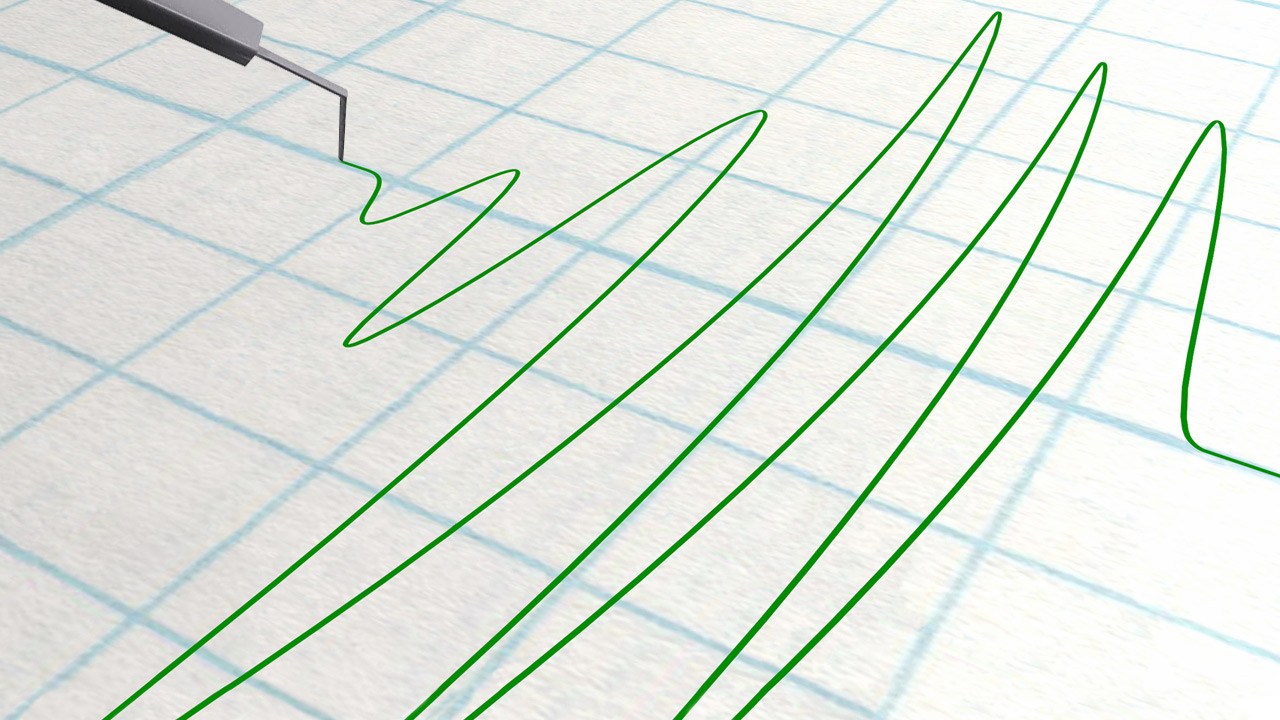Open for students and professionals of Structural Engineering, Earthquake Engineering and Mechanical Engineering. We will try to connect students of these different disciplines so they can work jointly on the assignment. Send us an email to request the full assignment sheet via this link.
Past and current research:
2014 – 2015: Group of students from Oregon State University
2015 – 2016: Jazmine Brown, University of San Francisco
There are many types of shake tables already in use worldwide. Some are small and simple, some can move in only one direction, some in both. Others are fully dynamic and can simulate actual past earthquake patterns, totally computerized.
There are tables that can just test a single wall, a corner section or a scaled model, while the largest table can test a full-scale model of a seven storey building. Most tests are accurate, but also time consuming and very costly.
Time and money presumably are the main reasons why most alternative construction techniques have not been tested up to today. Organizations or entrepreneurs cannot bear the high cost and long time it takes to carry out a full seismic test.
So perhaps we can come up with an in-between concept? A series of preliminary tests that gives us an initial idea of how certain techniques will likely behave during an earthquake. A simplified installation that can carry out basic tests in terms of overall seismic behavior, in- and out of plane failure, tension patterns and such. This in order to answer an interesting first question: Do we rule out the technique, or is it promising enough for further testing?
For testing larger or full-scale structures, of course we will need a bigger shake table. Therefore we see many cases where scaled models are built and tested. The question is, how reliable is this?
Will the strength of a 25% scaled model be equal to 25% of full-sized strength? Do lesser-dimensioned materials (wooden members, bricks, steel reinforcements) have comparable strength in a scale model, as compared with full-sized elements within a full structure? Are connections in a scale-model as strong as in a real corner or T-section? Must we subject the model to a lesser equivalent of movement and shaking?
Or more simply said; will a scaled house react the same when subjected to seismic forces as a full-sized house would do?
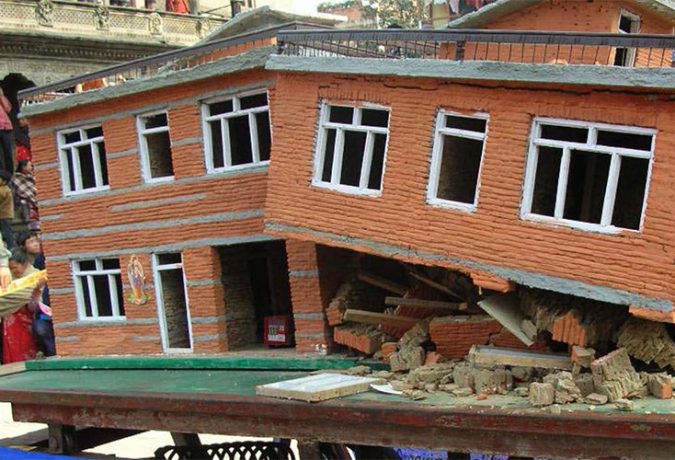 Shake table test of a scale model and public awareness presentation by NSET in Nepal.
Shake table test of a scale model and public awareness presentation by NSET in Nepal.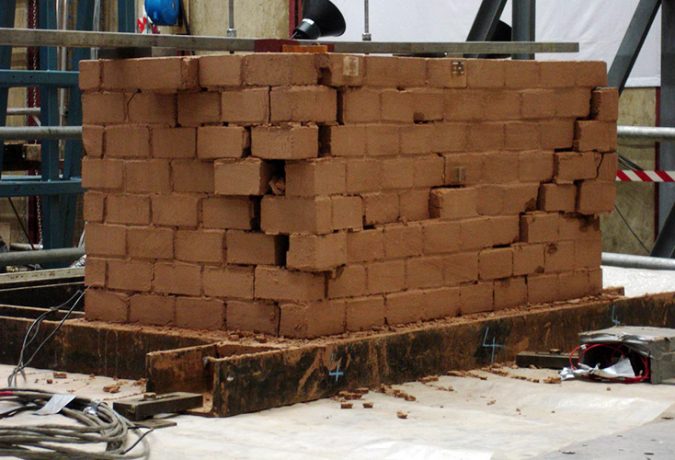 Testing U-shaped adobe walls by Paul Jaquin at University of Bristol.
Testing U-shaped adobe walls by Paul Jaquin at University of Bristol.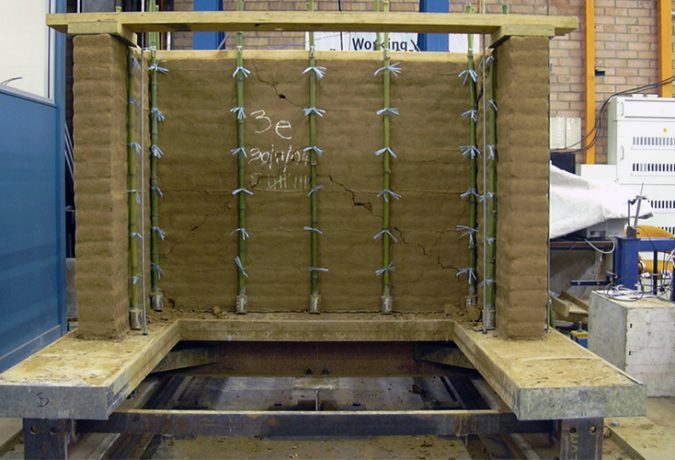 Testing bamboo reinforced adobe by Dominic Dowling at University of Sydney.
Testing bamboo reinforced adobe by Dominic Dowling at University of Sydney.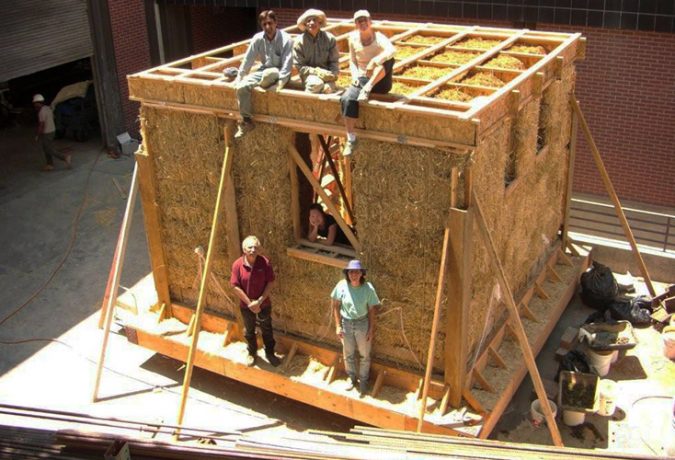 Testing a full-scale straw bale house at University of Nevada, USA.
Testing a full-scale straw bale house at University of Nevada, USA.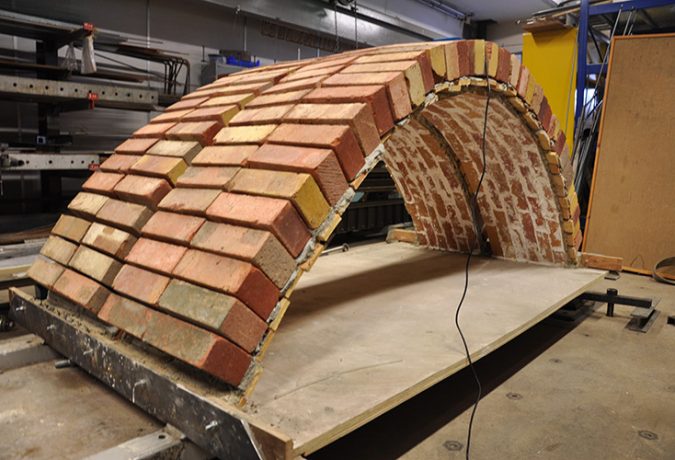 Seismic testing of full-scale brick arches at University of Cambridge, UK.
Seismic testing of full-scale brick arches at University of Cambridge, UK.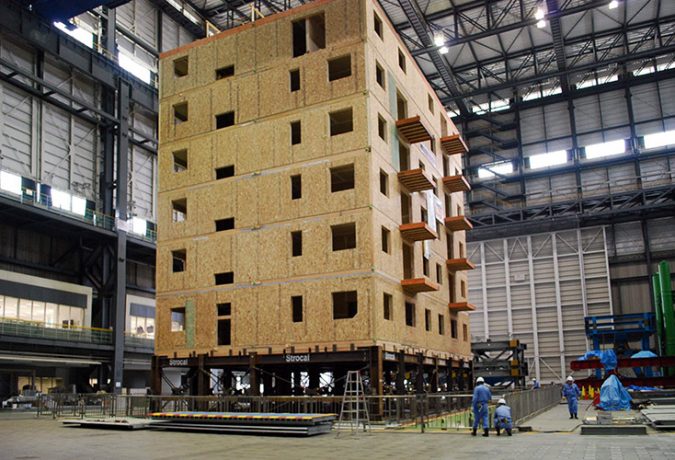 The largest shake table in the world is located in Japan.
The largest shake table in the world is located in Japan.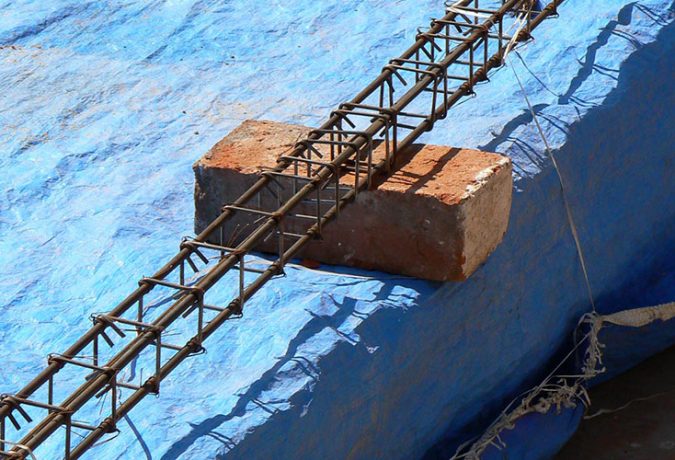 The other end of the spectrum; reinforcement for a scaled model of confined masonry at IIT Kanpur in India.
The other end of the spectrum; reinforcement for a scaled model of confined masonry at IIT Kanpur in India.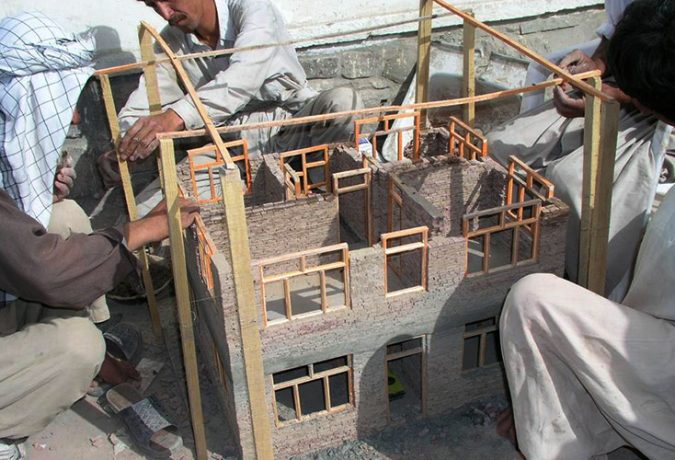 Building a scale model of a masonry house in Afghanistan.
Building a scale model of a masonry house in Afghanistan.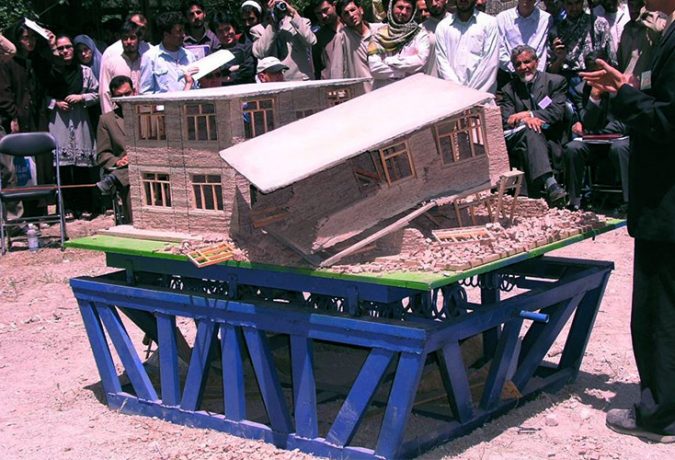 Testing scale models of a reinforced masonry house versus an unreinforced house, in Afghanistan.
Testing scale models of a reinforced masonry house versus an unreinforced house, in Afghanistan. For frequent updates and many more pictures, visit our Facebook page.
For frequent updates and many more pictures, visit our Facebook page.